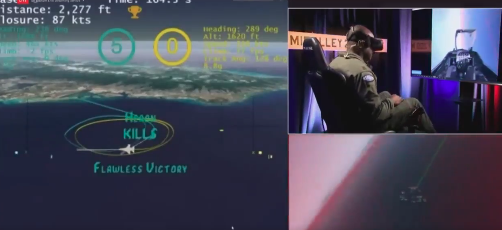SOURCE: AFI

The veil has been lifted on a historic experiment by the U.S. Department of Defense’s Office of Advanced Research Projects (DARPA). For the first time ever, an AI-controlled fighter jet engaged in a simulated air battle against a human pilot.
The robotic aircraft involved in this groundbreaking exercise was the X-62A, a modified version of the F-16 fighter jet. Equipped with sophisticated artificial intelligence algorithms, the X-62A aimed to demonstrate the potential for autonomous aerial combat. Its opponent? A seasoned human pilot flying a standard F-16.
Details regarding the specific results of the air battle remain classified. However, the very occurrence of this exercise signifies a significant leap forward in military aviation. DARPA is likely analyzing the data extensively to assess the capabilities and limitations of AI in dogfighting scenarios.
This development raises intriguing questions about the future of aerial warfare. Could AI eventually outperform human pilots in the complexities of air combat? While the answer remains unclear, the potential for AI to enhance pilot decision-making, reduce reaction times, and handle G-forces that would incapacitate humans is undeniable.
The use of AI in warfare also presents ethical considerations. Ensuring human control over autonomous weapons systems and establishing clear guidelines for their engagement are crucial aspects of responsible development and deployment.
DARPA’s experiment should be viewed as a significant step towards understanding the potential of AI in combat aviation, not as an immediate precursor to robot-on-robot dogfights. Human expertise and judgment are likely to remain vital for the foreseeable future.
The successful execution of this initial exercise paves the way for further exploration of AI’s role in air combat. Continued research, development, and collaboration between AI specialists and military personnel will be crucial in shaping a future where AI can effectively augment human capabilities in the skies.